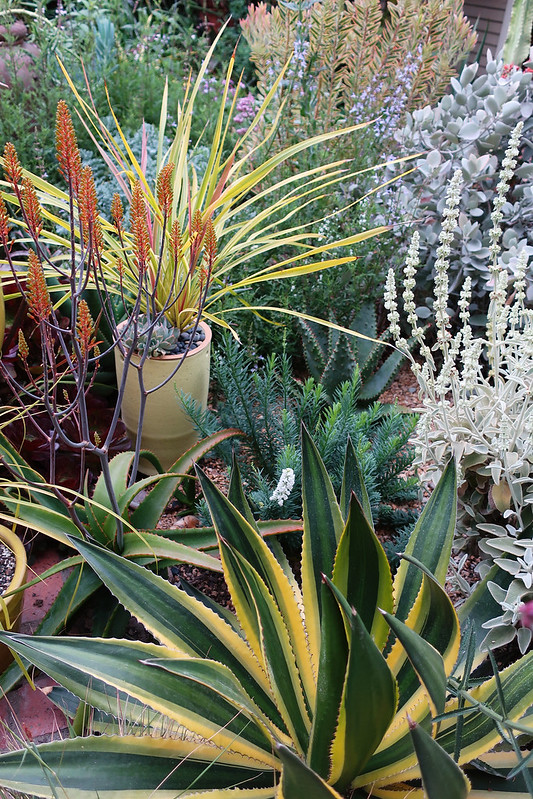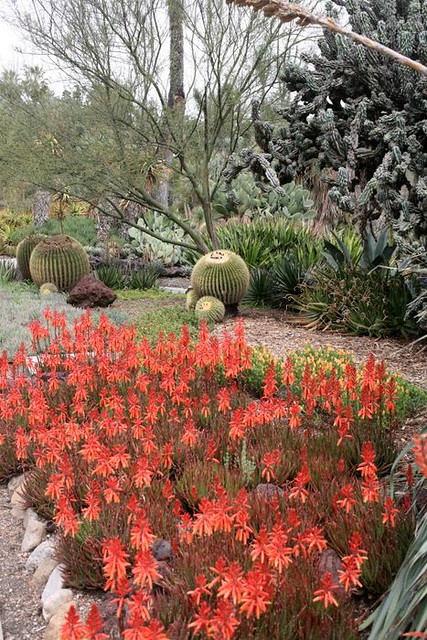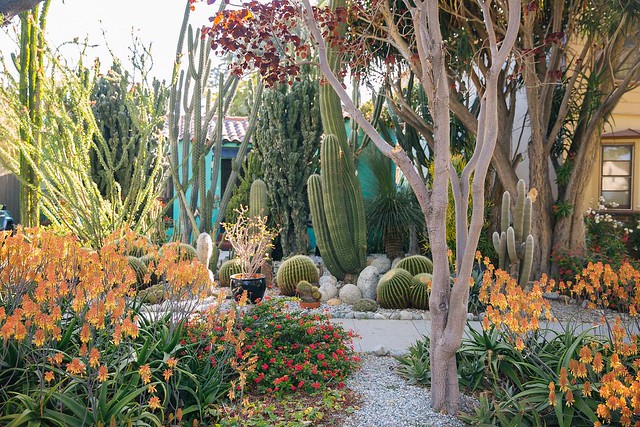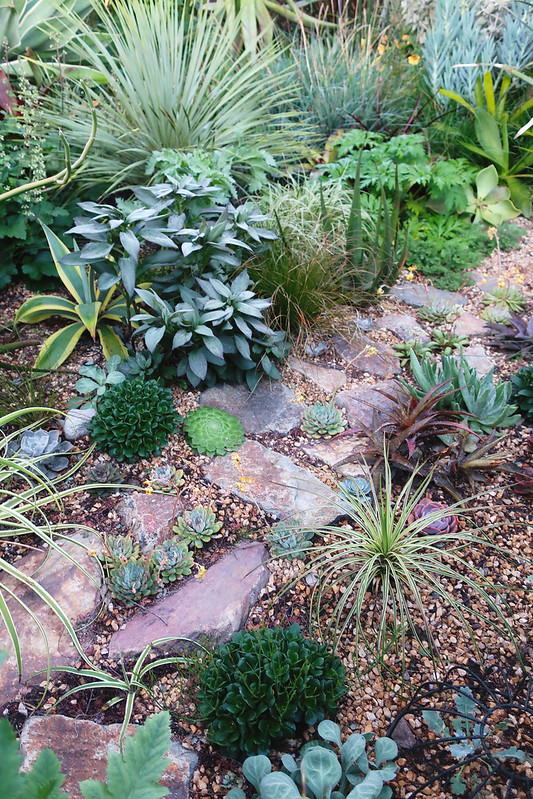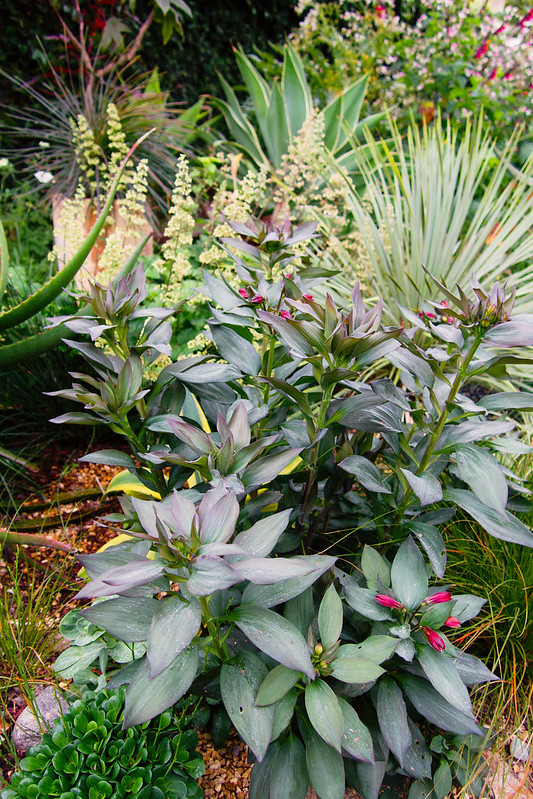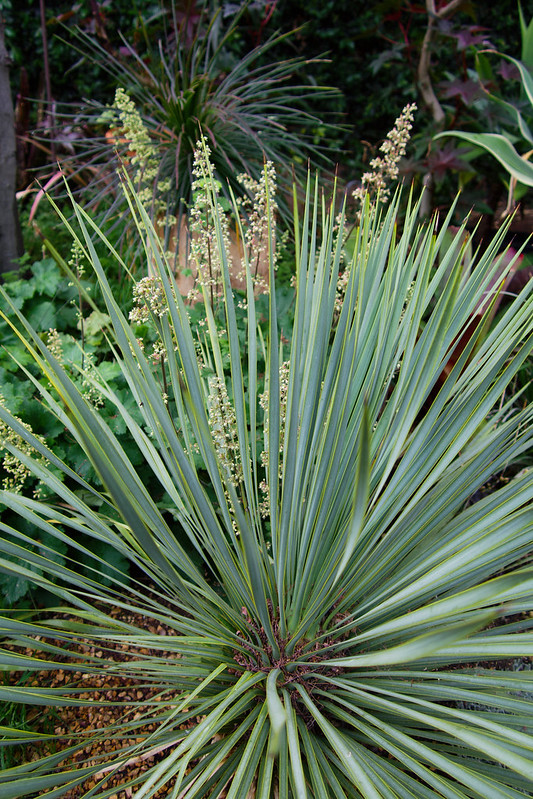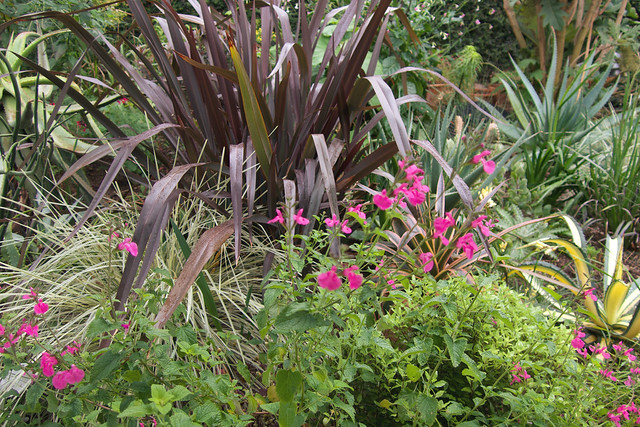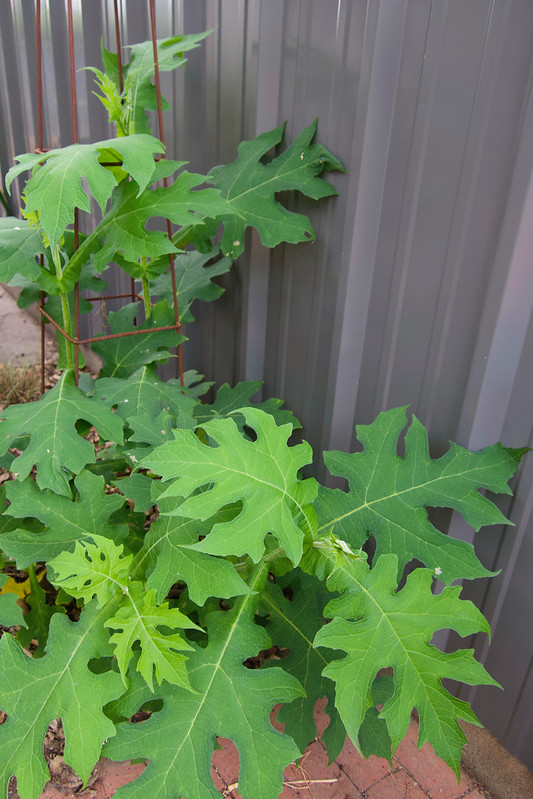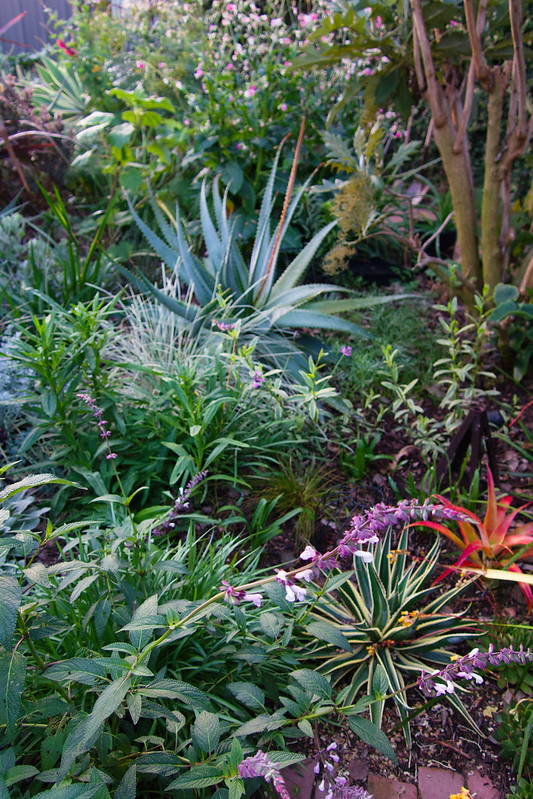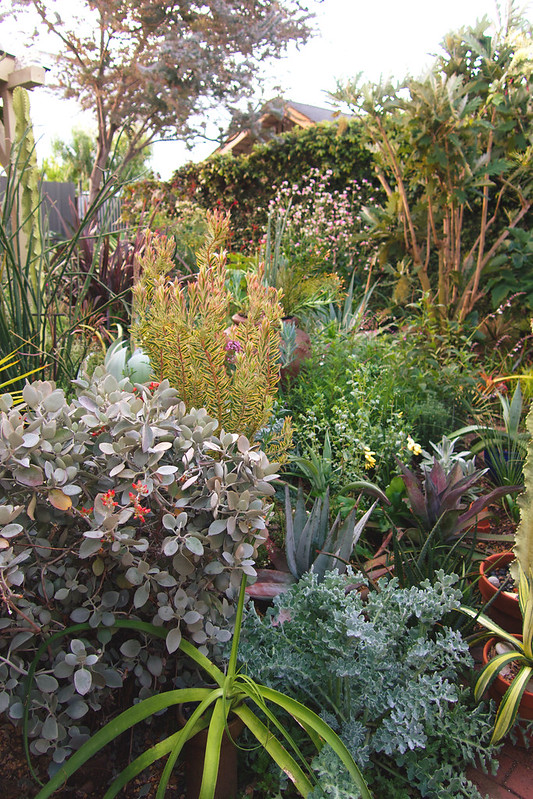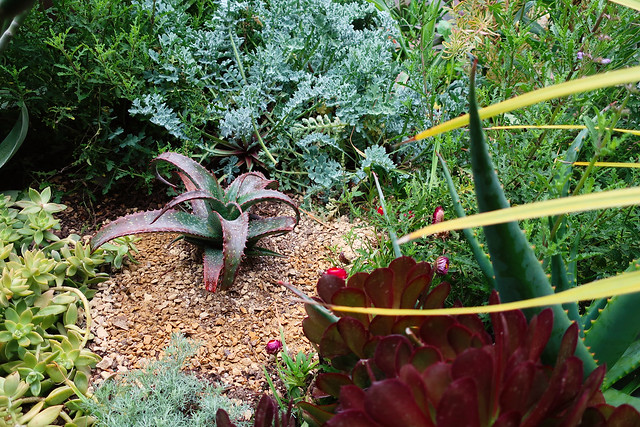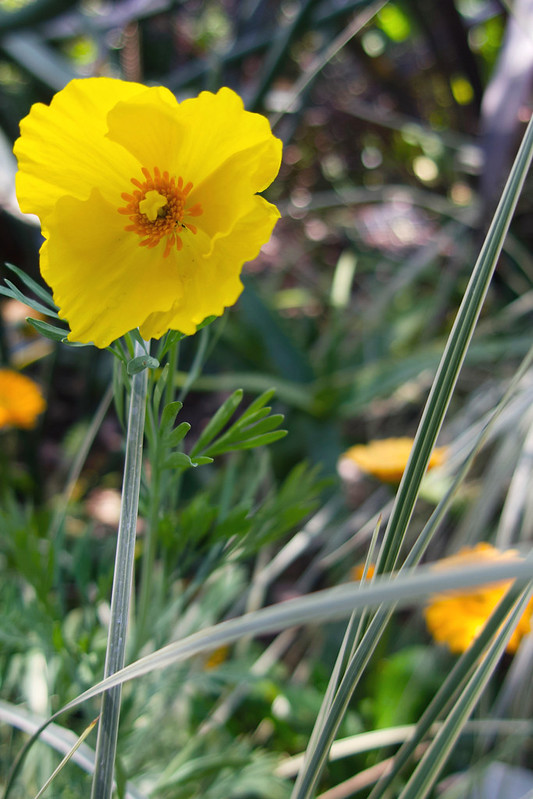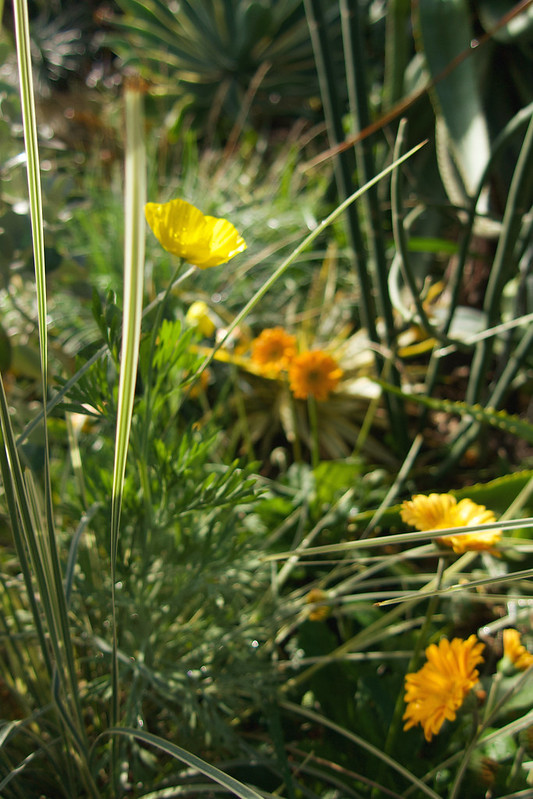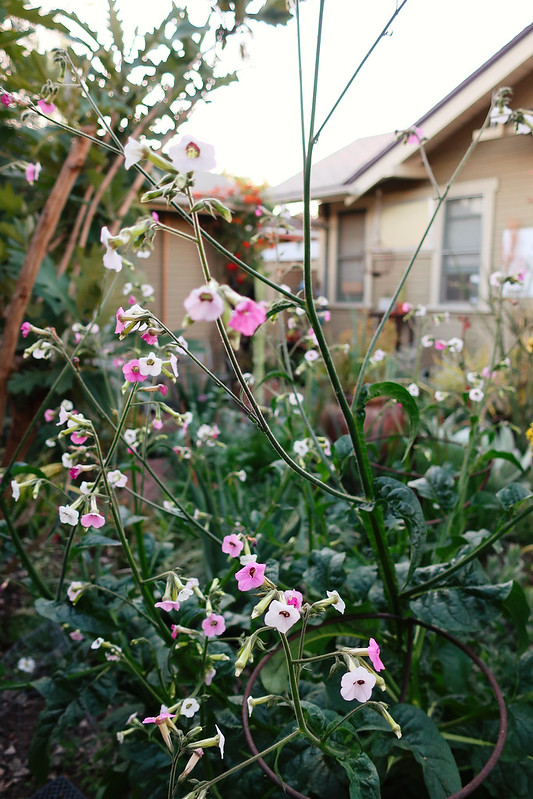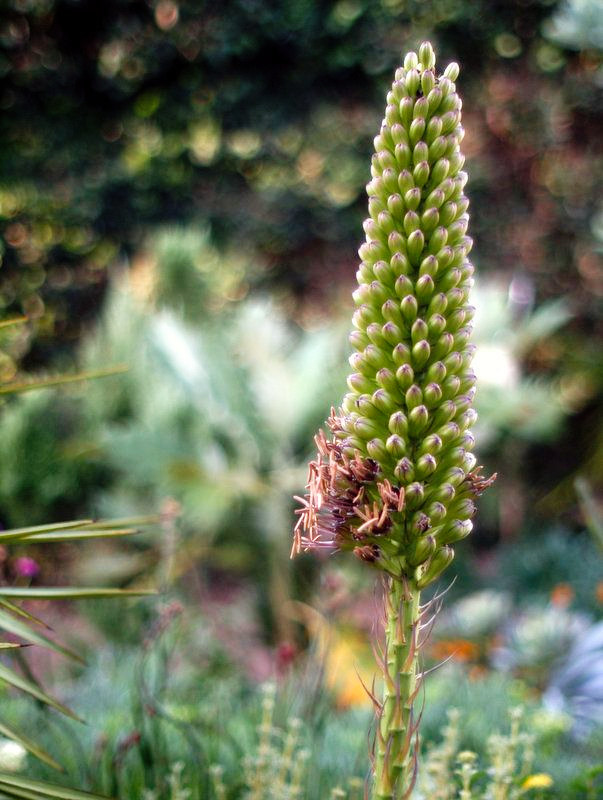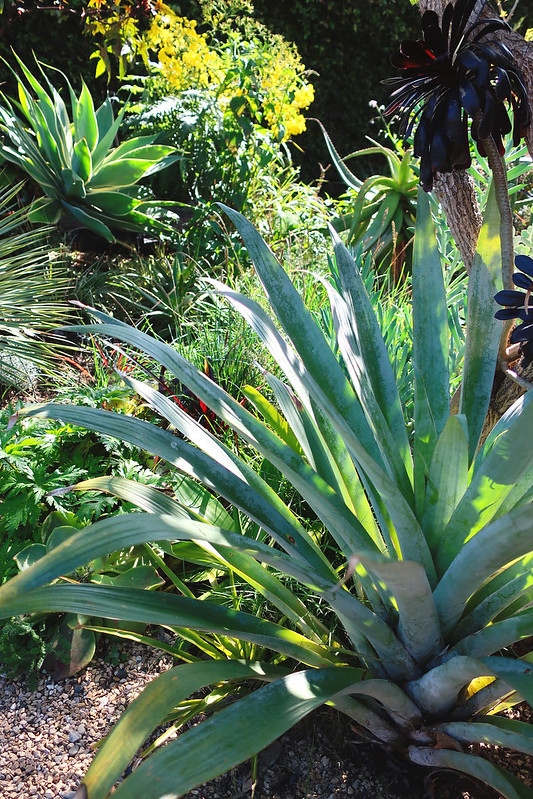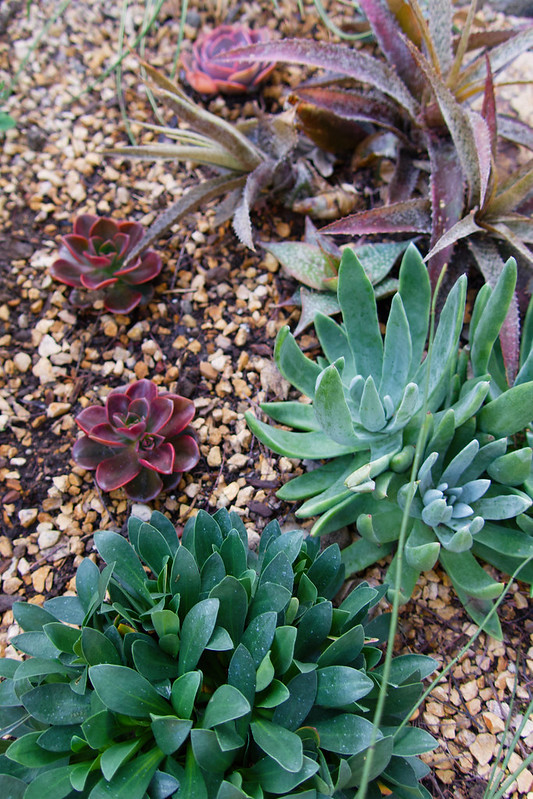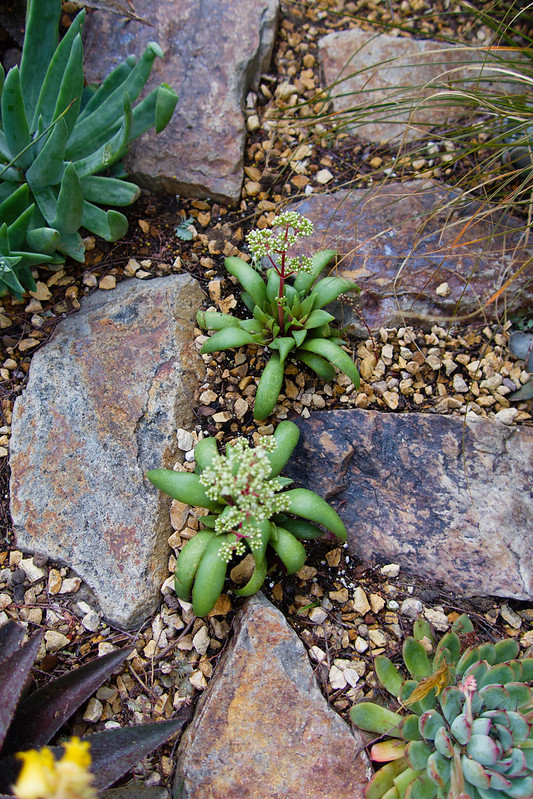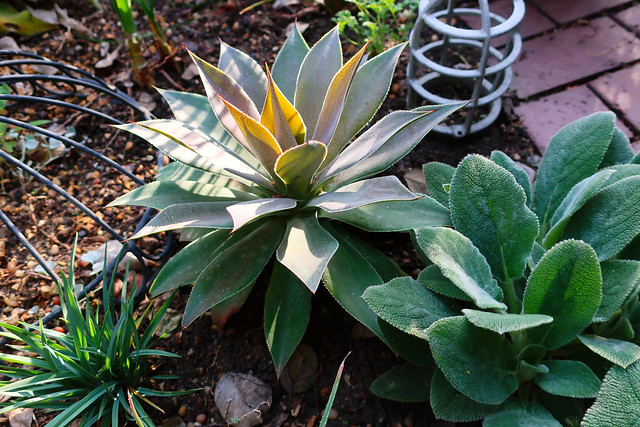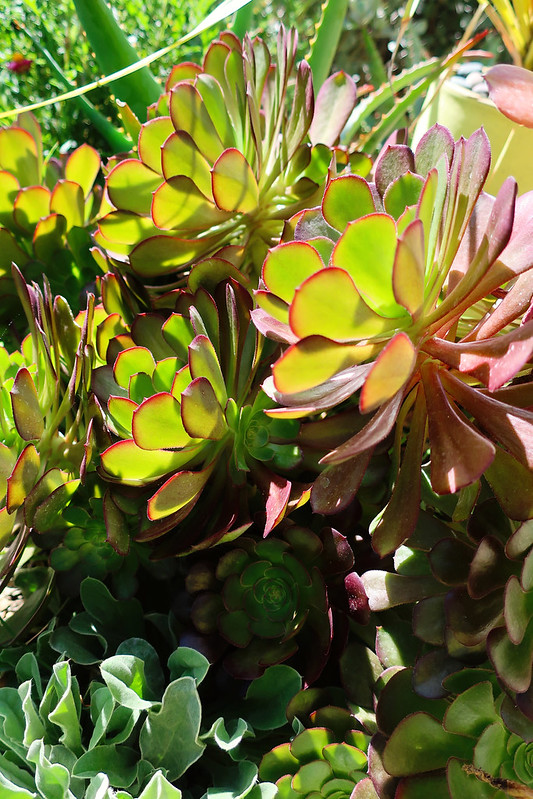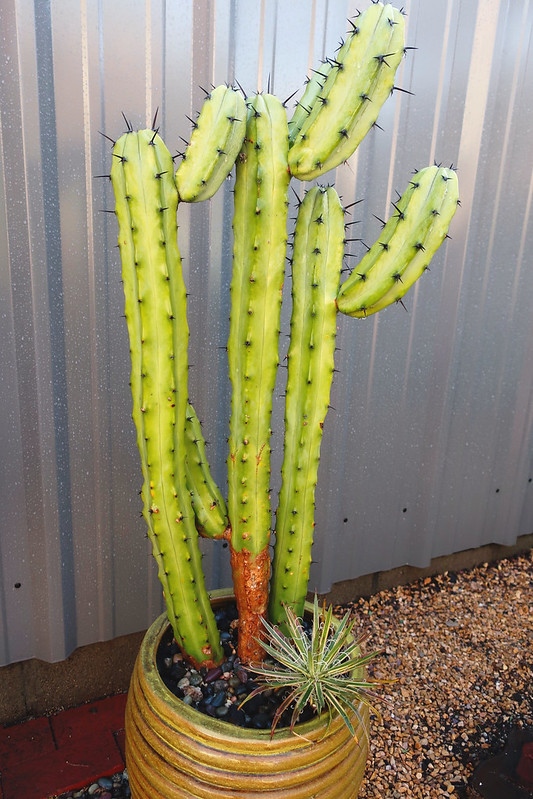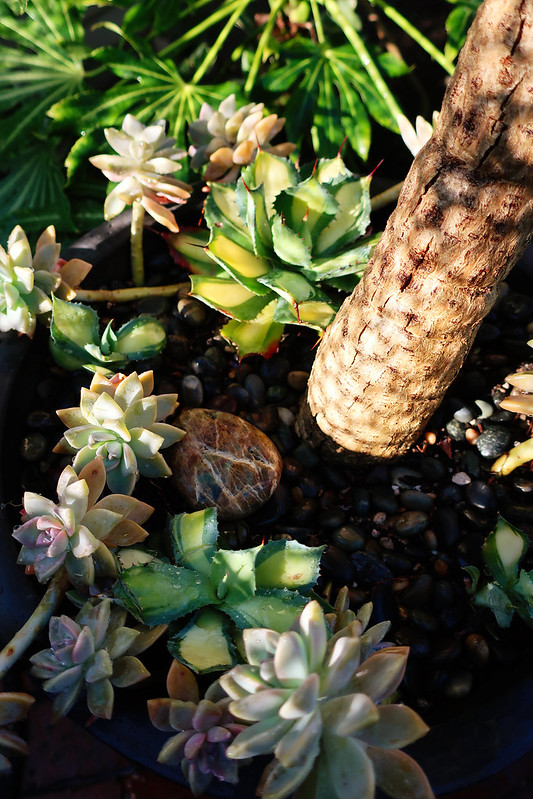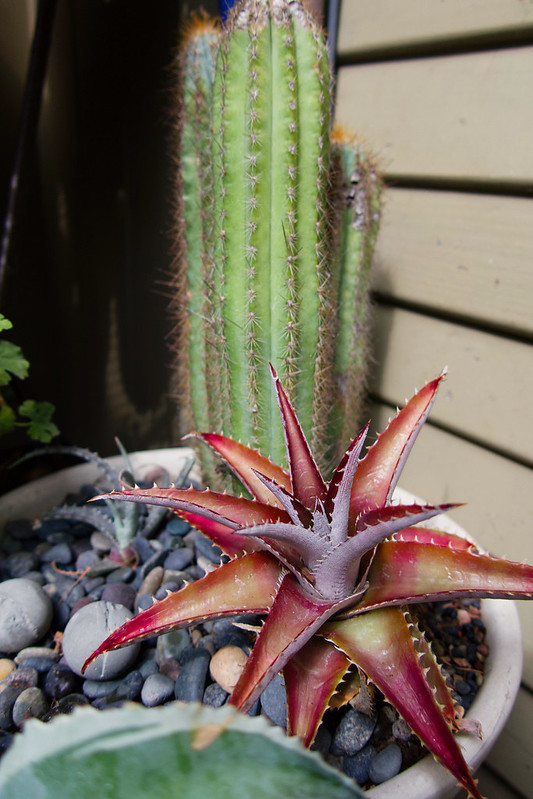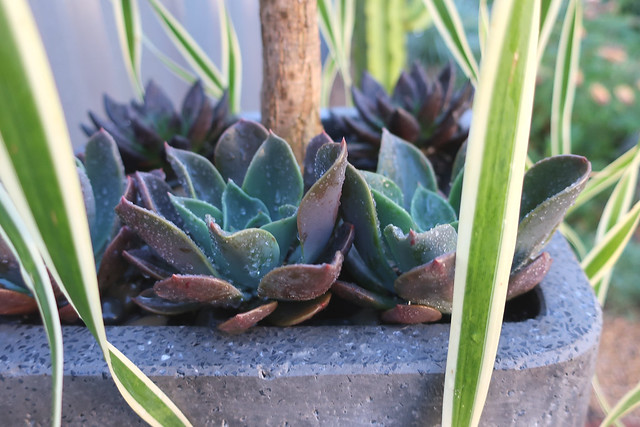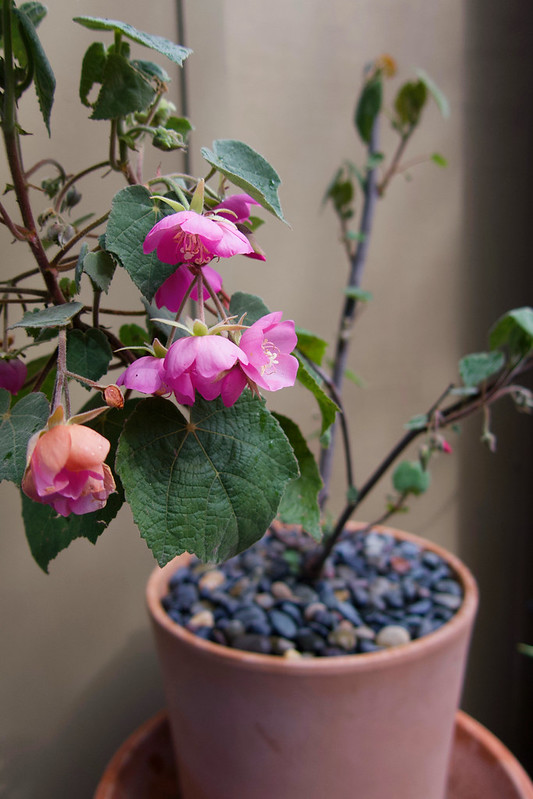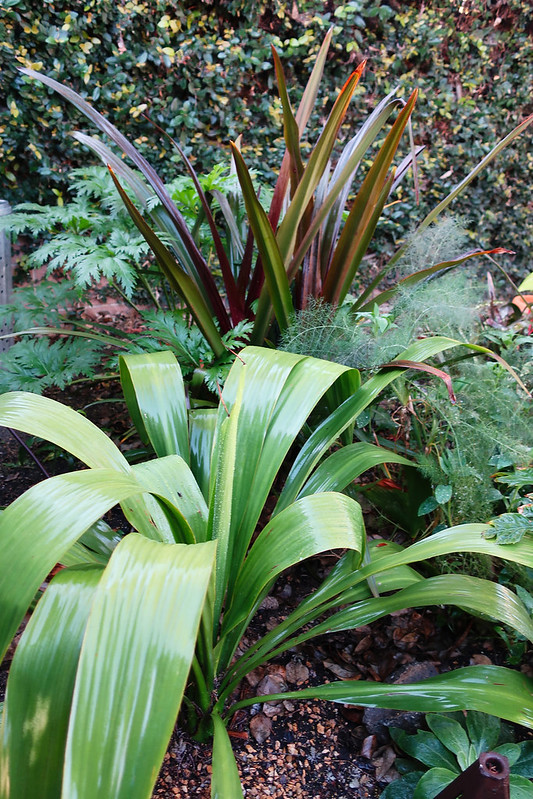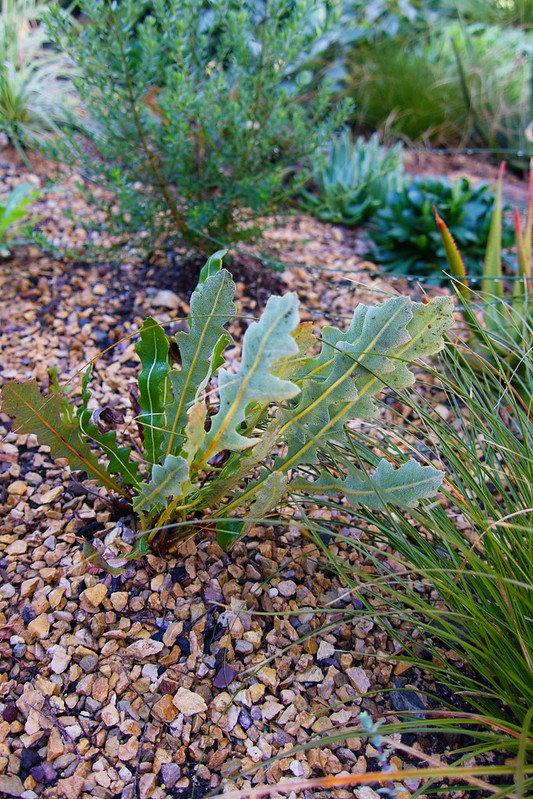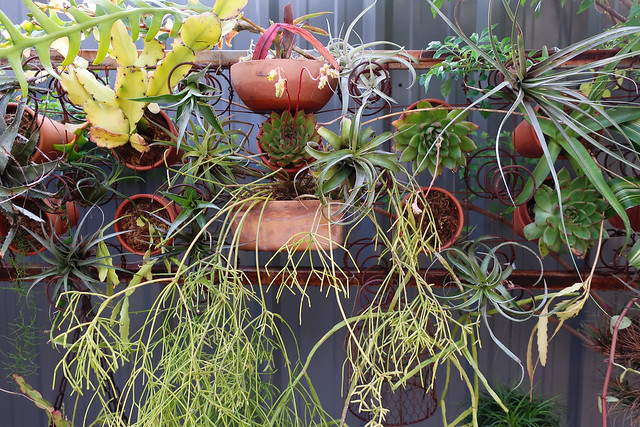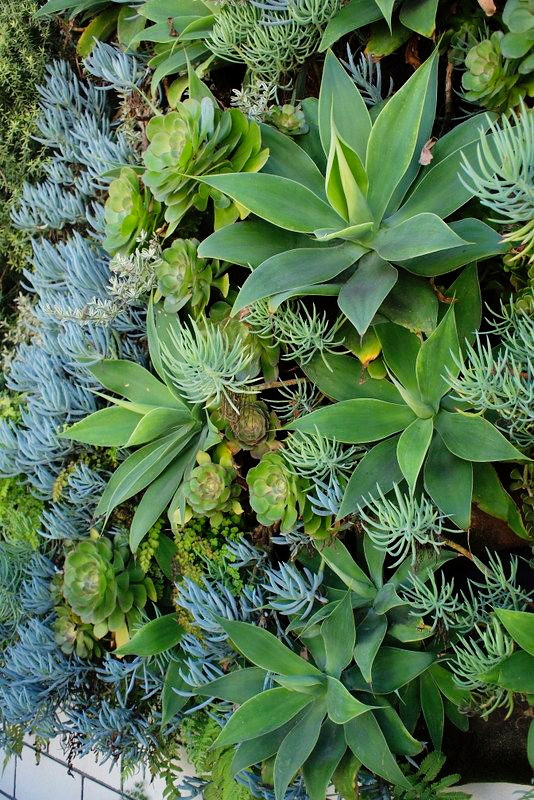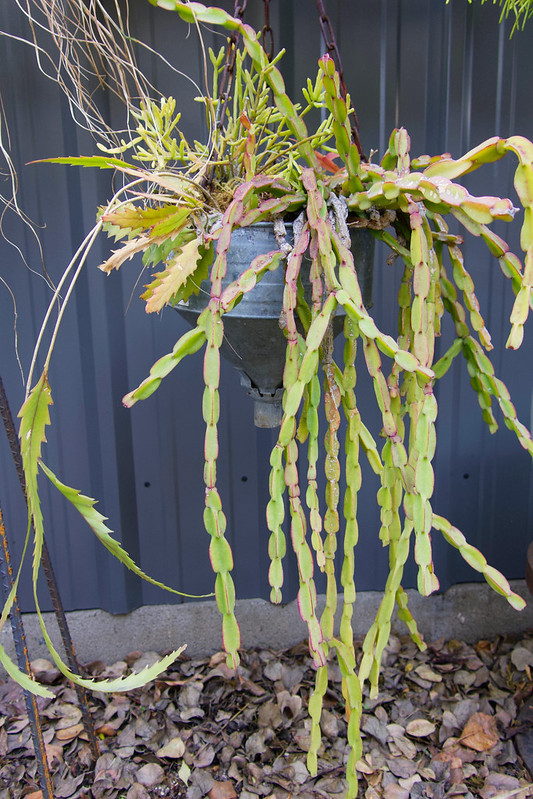For Southern California gardeners: Melianthus ‘Purple Haze’ was spotted at Plant Depot in San Juan Capistrano this month, a single plant. After planting, try not to move it around too much; in zone 10, placement that avoids afternoon sun is the best shot at countering the end-of-summer doldrums. This compact selection by Roger Raiche is worth trying to make happy. Right now mine continues a long, frustrating sulk after moving it one too many times.
H&H Nursery has 3-gallon Yucca rostrata for $50, which strikes me as a good price for relatively large plants (though young and nontrunking, of course) .
Far Reaches Farms is currently offering seed-grown Nolina hibernica ‘La Siberica.’ (See the plantlust page for photos and descriptions.) This selection with the wider leaves and curvy urn-like silhouette is unique. When it very infrequently becomes available, be ready to move fast. The Nolina nelsonii in my front garden has made me a big fan of the bear grass tribe. Here’s Dan Hinkley’s introduction to the bear grasses from his book Windcliff; A Story of People, Plants and Gardens, in which the incredible plantswoman Linda Cochran gently nudges him in the direction of the invaluable nolinas. This short account of humility ending in generosity brought a smile:
“That first year in my new garden presented a very steep learning curve. Accustomed to a landscape of shade, I was in shock and awe from a blustery site in blistering full sun and was in desperate need of good scaffolding. While visiting my fledgling garden for the first time, my friend Linda Cochran, a celebrated and adventurous gardener then on Bainbridge Island, suggested I try the razor grasses, as from her vantage the conditions seemed perfect. I knowingly nodded in agreement while attempting to not betray the fact that I had never once heard of razor grasses or the genus Nolina. Linda, sensing my ignorance on the matter, kindly brought two species to me the following week; I’ve been hooked ever since.”
Garden friends and I recently discussed Hinkley’s book, and while I enjoyed the opportunity for Hinkley to unfurl his elaborate prose style again, just like the old Heronswood catalogue days, some felt the vocabulary was a bit overwrought. I can see their point, but I am also reminded that he built his legend and seduced so many of us into buying his plants by prose alone, without photos, and that’s a considerable achievement. I doubt Hemingway’s terse approach would have sold many plants. I have my own struggles with writing and tending to favor compound sentences, and will only add that a book I’m currently finding useful is Several short sentences about writing by Verlyn Klinkenborg. (Sample from Prof. Klinkenborg, Page 13: “Most of the sentences you make will need to be killed. The rest will need to be fixed. This will be true for a long time.” Apparently good writing has a lot in common with good gardening.)
Heronswood trivia: my last order was made in June 2006 and included the now-sulking Melianthus ‘Purple Haze.’ The previous order in 2005 included Kniphofia caulescens ‘Helen Dillon,’ Crambe maritima ‘Purple Blush,’ Laurus nobilis ‘Aurea,‘ Persicaria ‘Silver Dragon,’ Dianthus ‘Chomley Farran,’ Geranium phaeum ‘Taff’s Jester,’ Francoa sonchifolia, Beschorneria yuccoides x septentrionalis. No Heronswood plants other than the melianthus are extant in the garden today.
Periodically, as in again yesterday, I investigate what’s up with getting Tropaeolum polyphylum to grow. Linda Cochran’s excellent account with ravishing photos (here) is a must-read on growing this poorly documented native of Chile. Currently, there does not appear to be a source, and Linda explains the deep-dive behavior of its tubers as the problem with propagation. I do realize documented success is only coming out of the PNW. Still, I’d like to give it a try in zone 10, as I did with so many Heronswood plants. Derry Watkins of Special Plants says fresh seed is the answer and currently has seed on offer after summer 2021 bloom.
Local Plant Sale Alert: Those images of Aloe camperi from Ray Valentine’s garden in the last post are unexpectedly timely. Ray is having a plant sale this weekend, May 1st and 2nd, 8-4pm. Contact tierra13 at sbcglobal.net for the address. Wear a mask. Bring cash. Maybe there will be divisions of Aloe camperi for sale!
Solanum pyracanthum, you would think, demands a hot summer to rouse itself to a display like this. Yet in my zone 10 winter garden, it grew to such proportions in a pot placed at an often-traveled corner of the garage (where we keep the fridge with the cold drinks), that Marty laid down an ultimatum. Arms were getting scratched; the plant had to go. As in total removal. I said I’d handle it — which in garden speak meant staking it and cutting it way back until the complaints ceased, and this approached worked. I should have been brutal with this solanum all along, because this is the best it’s ever looked for me. Thank you, Marty!
This week the fringe tree takes a bow. And a shout out to Plectranthus argentatus for handling the dry shade/patchy sun under the acacia tree so beautifully. I’ve been pinching that back as relentlessly as the Solanum pyracanthum, with equally good results. Some worthwhile goals: Practice shorter sentences. Ruthlessly pinch back plants.






